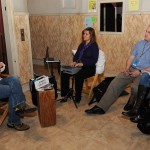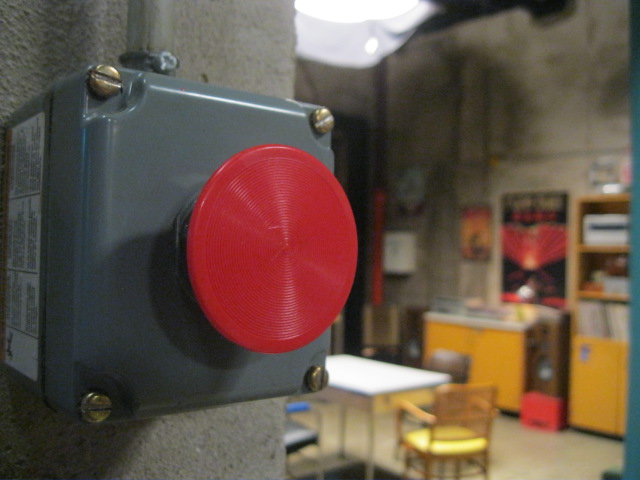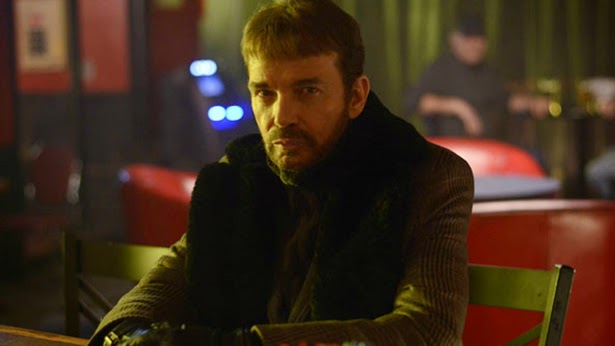 I had the opportunity to sit around a table with a small group of international journalists last January and speak with David Simon and Eric Overmyer, the creators of the new HBO series Treme. This was about an hour prior to the main HBO Treme press conference for the Television Critics Association, which was being held at the same hotel.
I had the opportunity to sit around a table with a small group of international journalists last January and speak with David Simon and Eric Overmyer, the creators of the new HBO series Treme. This was about an hour prior to the main HBO Treme press conference for the Television Critics Association, which was being held at the same hotel.
Treme (pronounced “treh–may“) stars Wendell Pierce (above) Khandi Alexander, Melissa Leo, Steve Zahn, Clarke Peters and many others is a story about musicians and others struggling to rebuild their lives and their city–New Orleans–in the wake of Hurricane Katrina. Treme is a neighbourhood in America’s jazz capital.
Simon, a former crime reporter who went on to create some of the most critically-acclaimed TV series ever (The Wire, Homicide: Life on the Street), has a writer’s edge and doesn’t suffer fools but he warmed up during the small table session. He spoke with passion about discovering New Orleans, the subject of his new series, in his twenties and how he sees it as the most foreign city in America while, at the same time, as the most American of cities. Here’s an excerpt from that interview which runs this month in a story I wrote for Movie Entertainment magazine:
New Orleans is unique, says Simon, in fusing African-American music into true Creole jazz. “You go anywhere from Kathmandu to Johannesburg and you walk into a bar and if they are playing a tape machine, they’ve got Michael Jackson or Coltrane or Otis Redding or something,” he says. The sound, he points out, originated “from about 12 square blocks in New Orleans.”
What makes the city as universal and relatable as Baltimore, he says, is that “it’s a triumph of American urban culture.” It bugged him during the last U.S. election when speech after speech at the Republican Convention promoted the idea of a small town America when, the fact is, “80% of us live in metro areas,” he says.
And the real test of whether or not that can work in the 21st century will take place, Simon believes, in a rebuilt New Orleans. “This is a city that is essential in the American psyche,” he says, “and yet we all witnessed the near destruction of it. It was the closest thing to the destruction of an American city since the San Francisco earthquake. And yet it’s coming back on its own terms as best it can with a lot of concern from some quarters but a lot of indifference from much of the country”
This interview took place months before the tragic death March 30 of David Mills, the 48-year-old writer/producer who had collaborated with Simon on much of his best TV work. Mills own black/white ancestry would have informed this exploration of culture in urban America, but Simon and Overmyer, a long-time New Orleans resident, seemed to have a handle on it.
The series, however, will be a challenge for viewers used to a more conventional narrative. I was swept away in one long scene in the pilot which puts you in the centre of a New Orleans parade. But the series is almost too real in that it dares to venture into the mundane and ordinary in order to tell an extraordinary story.
Dave Walker, a past TCA president and the TV guy at the New Orleans Times-Picayune, recognized that this series might be a tough sell to much of America when he surveyed a handful of critics (including yours truly) about it here.
All I can add is that it will be well worth your while to sample Simon’s latest series as it premieres tonight, Sunday April 11, at 10 p.m. ET/MT on HBO and HBO Canada. Especially compelling in the performance of Simon favourite Pierce as a smooth-talking trombonist struggling to make ends meet in the wake of Hurricane Katrina. Pierce is a New Orleans native and actually learned to play the trombone for this role. In some ways, Treme reminds me of another series set in New Orleans, Frank’s Place. The CBS series pretty much defined the term “dramedy“–a term shunned now as it was then as the kiss of death. It just meant that the series had the capacity to be as funny as a sitcom and as dramatic as a drama. In the case of Frank’s Place, both extremes were explored to such an extent that from week to week you never knew what kind of a show you were going to get.
In some ways, Treme reminds me of another series set in New Orleans, Frank’s Place. The CBS series pretty much defined the term “dramedy“–a term shunned now as it was then as the kiss of death. It just meant that the series had the capacity to be as funny as a sitcom and as dramatic as a drama. In the case of Frank’s Place, both extremes were explored to such an extent that from week to week you never knew what kind of a show you were going to get.
Which is why many critics, who bore easily, loved it (it won the 1988 TCA Award for comedy) and the masses needed to support a network show (who apparently confuse easily) did not. Still, mainly on the popularity of former WKRP in Cincinnati star Tim Reid (above, centre), the series lasted a full 22 episodes as part of the 1987-88 season. As far as I was concerned, some of the best drama on TV that season occurred on Frank’s Place.
The series, which was created by Hugh Wilson and Reid and was based on a real New Orleans eatery, was way ahead of its time in form and content. It was shot one camera, without a live audience, at a time when traditional three/four camera sitcoms like The Cosby Show and Family Ties thrived. This worked for The Wonder Years back then but Frank’s Place was far removed from that suburban, middle America trip to the ’60s. Frank’s Place was about working people, blue-collar Black Americans, and dealt with race in a real, matter-of-fact way rarely seen on television.
“Oh yeah, I loved Frank’s Place,” Pierce told me after the Treme press tour session last January. “It’s a show that people in New Orleans loved. Out of all the shows, that was the one we thought that really depicted New Orleans in a true way.”
Unfortunately, Frank’s Place seems to one of those series not available on DVD due to the prohibited cost of clearing the music rights. The original soundtrack of the series featured music from authentic Louisiana musicians. (The theme was “Do You Know What it Means to Miss New Orleans?” by Louis Armstrong.) Reid said a year or so ago he was working on re-recording a new soundtrack so that the series could be released on DVD but so far there seems to be no confirmed news of that release.
One sad, bizarre link from Frank’s Place to Treme: The restaurant which inspired the late ’80s comedy was an actual place called “Chez Helene” (no, nothing to do with that little talking mouse on the CBC “Welcome to French” kiddie show from the ’60s). The chef, Austin Leslie, was quite an important culinary figure in New Orleans. After Chez Helene closed, the elderly gentleman, noted for his white sailor’s cap, cooked at a few other establishments and tutored young chefs.
When Hurricane Katrina struck, Mr. Leslie was trapped in his attic for days. He and his wife were rescued off the roof of their house and were taken–along with tens of thousands of others–to the Louisiana SuperDome. He was later evacuated to an Atlanta hospital, where he died a couple of weeks after the storm.






